- Home
- Neal Asher
Dark Intelligence Page 11
Dark Intelligence Read online
Page 11
Even as she mentally reached out for those robots her connection to the hardware all around her began fizzing. She managed to get some robots on the move, then everything dissolved in static. Spear stepped over to her, reached out with one finger and prodded her chest. She went over like a felled tree, flat on her back.
SPEAR
As I gazed down at Isobel, I seriously considered just leaving her there while I opened the hold doors to transport my ship mind over to the destroyer. I did, after all, have a dangerous AI to hunt down. But I could not overcome the after-effects of my war; I couldn’t take human life so casually. I opened the hold airlock doors, noting a couple of maintenance robots in the corridor outside. She had probably summoned them just as the prion cascade shut down the nerves linking her to her internal modem nodes. They didn’t react to me, so I guessed she hadn’t had enough time to instruct them further.
I quickly dragged her out of the hold then into a nearby storeroom, laying her in a recovery position so she wouldn’t choke on her tongue. Then I went back for Trent and Gabriel. These two, weighing twice as much as her, were more difficult to move. At one point during the sweaty procedure, I considered heading for the bridge and shutting down the grav-plates. But soon they were lying beside her, the three of them like a row of parentheses. I closed the door on them, then used Trent’s carbine to turn the electronic lock into slag, so the door could only be opened manually and from the outside.
Next I crossed the ship to enter the hold space on the other side, where I’d already ascertained they kept their EVA tools. What I required was clamped to one wall: a pulpit zero-gravity handler. The thing was named for its resemblance to a church pulpit, from which you controlled three large mechanical arms, powered up by laminar power storage underneath the platform on which you stood. Two of the arms extended from the top of the pulpit whilst a third came out from below. Each had four alternative sets of manipulators that I could revolve into position. Luckily the grav in this hold was off, so I opened the space doors, detached the device from the wall and climbed into it. After it powered up, I used its chemical steering thrusters to take it out into vacuum. It was easy enough for me to operate, being an ancient piece of machinery that had probably seen service during the war. I had never used such a device before, but of course felt as if I had.
Accustoming myself to the controls, I took it round the ship to the first hold. I entered, selected the required manipulators and picked up my new ship mind, Flute. Steering was sluggish with the extra mass, but I found a targeting program I could run, set a course for the destroyer and put the pulpit on automatic. As it slowly took me over, I inspected the damage the ship had received. Though it was intact, it had obviously taken a pounding during that fatal conflict above Panarchia. I wondered what had impelled Penny Royal to abandon it and board that prador dreadnought. And then the AI had made that dreadnought crash, surely leaving itself without U-space transport? Certainly, going black, it wouldn’t have wanted a vessel as easily identifiable as its original shell. But why hadn’t it taken full control of the prador ship? And how had it travelled from the world it crashed on to … elsewhere. It was a puzzle. Unless, of course, you realized that Penny Royal had at that point turned into the AI equivalent of a raving lunatic.
The pulpit decelerated to a perfect stop just out from the loading port. I climbed out and propelled myself over, struggled for half an hour with the port’s manual controls, then we were in. Five hours later I had Flute inside the ship’s cortex, had raided a ship’s store for the required optical and s-con cables and connectors and returned to the Moray Firth for more equipment. It was then a bit of a business to insert Flute’s case into the space designed for the ship’s AI and hook it up, but I eventually did so.
“Wake up, Flute,” I said out loud, also auging the instruction through to it.
“I am fully functional,” it said at once.
“Status?”
“All system ports are connected, data loading. Internal battery is at 22%. External source has nil input. Status of U-calculus is loading—engine parameters on standby, but nil charge—”
“Do you have the fusion reactor data stream?” I interrupted.
“Acquiring,” it replied, then, “I do not recognize parameters.”
“Access data upload,” I instructed, auging through and transmitting blueprints and stats for the destroyer. It had taken me less than five minutes to upload these from the Polity net. It took Flute over ten minutes to absorb and store all this.
“I recognize parameters—running diagnostics now.” Then after a pause, “This may take some time.”
I just stood there staring at Flute’s case, as if searching for some recognizable expression. No, I must have been imagining that hint of irony in its voice.
“How long until you complete a full ship’s diagnostic checks, and then how long until you can start up the reactor?”
“Forty hours for diagnostics. Unknown time for acquisition of maintenance control and unknown time for necessary maintenance,” it replied, then added, “So I’ve no idea.”
There it was again, but right at that moment my concern was that “forty hours.” I knew that after a hundred years such delays were almost irrelevant, but I chafed at them. Perhaps I also felt that way because I knew there were more to come. I had acquired a ship and installed a mind for it. I now needed to ensure I had full control of that ship, its weapons and, of course, I had to find the target for those weapons.
“Very well,” I replied, not sure if I wanted to wait that long before returning to the ship. And, as I turned to leave the ship’s cortex, I had the creepy feeling that I was being closely inspected.
ISOBEL
Before he came back, she felt the grav-plates cut out and knew that he must intend to move her. Precisely twelve minutes later he entered the storeroom, heaved her up off the floor and propelled her through the ship to her own cabin. There he installed her in a form-mould chair. Grav came back on shortly afterwards, which meant he had now penetrated her ship’s systems. She should have put in more security. She realized that she had been foolish to rely on her own perpetual control.
“I am allowing you to speak now,” he said, pulling over a second chair and sitting down in front of her. “But that’s all you can do.”
“I need a drink,” was the first thing she said, noting that he looked exhausted.
“By and by,” he said, waving a dismissive hand, and she damned herself for giving him even that little bit of leverage. “I can’t find the location of Penny Royal’s planetoid in your astrogation logs.”
“That’s because the coordinates aren’t there.”
“Tell me the coordinates.”
“What did you do to me?”
“Targeted prion nerve-blocking,” he replied. “You’re paralysed and you can’t access anything mentally, since I’ve also shut down all cerebral connections to your modem nodes.” He tapped his aug. “I control a selection of prion cascades through here—simple infrasound signals set them running and others set them in reverse.”
She felt a creeping horror at how she had let someone so dangerous aboard her ship. Though everything she knew about him described someone highly capable with augmentation and adaptation, the expertise he had demonstrated was orders of magnitude higher. This was getting into AI territory. She felt a surge of frustration, understanding that anyone capable of curing her would be dangerous to have around and she should have taken greater precautions. Yet he claimed Penny Royal’s work was beyond him …
Next, frowning, he continued, “After my own experiences with a spider thrall it’s not something I like doing, but you’re just too dangerous, Isobel. Now, tell me the coordinates of Penny Royal’s planetoid.”
“Why should I?” Let him push for a little while for this useless information before she gave it to him. He would head for Penny Royal’s planetoid and find it empty. He might then spend time in the Graveyard searching for the AI, which would give her more
time to hunt him down and kill him.
“Because if you do, you get to live,” he replied.
“I’m supposed to believe that after your little speech about me being cored and given to the prador?”
“You don’t have much in the way of choices.”
“Go to hell.”
The next moment she couldn’t breathe, couldn’t even fight to breathe, was just suffocating. This went on for a minute then abruptly stopped, leaving her gasping.
“Are you sure you want to die?” he asked.
As she fought to regain her breath she studied him, all her eyes open, and realized she was reading more about him now—that her hooder eyes had given her a deeper insight into human reactions. Was that because she was seeing all other beings wholly as prey? She understood now that keeping her imprisoned in this way was unpleasant to him and that shutting down her breathing had caused him actual pain. She found herself analysing this coldly. Had she been captured by any of her Graveyard enemies, she could be certain of death. But the outcome was not so certain with Spear.
“So if I tell you, what will you do?” she asked.
“I’ll leave you paralysed until I have the destroyer running,” he replied. “Then I’ll instruct all the prion cascades to reverse, which should take a number of hours. By then I’ll be gone.”
“You’re lying,” she said, then silently cursed herself for speaking before thinking. Anyway, he hadn’t lied to her, he had just omitted something.
“What makes you say so?”
“I don’t believe that’s all you’ll do.”
He stared at her for a long moment, obviously tired and irritated. “Okay,” he began, “I will do precisely as I said, but I will also degauss your U-space drive Calabi-Yau frames before I depart. I calculate that it will take you at least six months to recalibrate them. By which time I will have visited Penny Royal’s planetoid, completed my business there and, if successful, will have returned to the Polity.”
There was still something not quite truthful there. She told him some coordinates.
“Now you’re lying,” he said.
“No I’m not.”
“I’m monitoring you very closely, Isobel.” He reached up and tapped his aug again. “We’ve known the mental processes involved in lying for centuries now. Tell me the coordinates of that planetoid and you get a drink and get to sleep on your bed. Lie to me again and I’ll just leave you here to die while I take your ship apart. Is that clear?”
“They’re shifting coordinates,” she replied, because she knew he fully intended to carry through his threat, no matter how much it pained him, and because him finding the planetoid didn’t matter at all really. “The planetoid is a wanderer between suns but its course is mapped. On the shelf behind you, do you see the ammonite fossil? The vector coordinates are recorded in the pyrite crystals inside—there’s an electrocarbon microport in the centre of the spiral.” That was how the coordinates of the planetoid had been delivered to her after she’d made her queries. Why were they recorded in that manner, in that object? It was foolish to expect logic from something so deranged. Though in retrospect she wished she’d extrapolated that derangement from the object, rather than from its source.
He walked over to pick up the fossil, and weighed it in his hand for a moment. “Thank you, Isobel.” Crossing the room, he picked up a water bottle and held it to her mouth.
After she drained it, he put the bottle aside, stooped down to pick her up like a child and took her over to her bed. Carefully he laid her down and arranged her comfortably on her side.
“Sleep well, Isobel,” he said.
She tried to fight it but it swamped her. The last thing she heard was her door closing.
SPEAR
After putting Isobel to bed I did the same for Trent and Gabriel, then for myself. Six hours of sleep later and I was rested, then I hurriedly showered and dressed. Heading directly to a small onboard lab, I ran a scan of the ammonite fossil to ensure accessing it as Isobel had described wouldn’t destroy the data it contained. The scan revealed no evidence that it was manufactured at all, which showed the intricacy and precision of Penny Royal’s work. The optic port was standard—no traps. However, the scan also showed pyrite crystals within that weren’t connected to the optic data port, and it became evident very quickly that these contained quantum computing. Relevant? I didn’t know.
Next, plugging into the port, I accessed the fossil and found vector coordinates. These traced the position of Penny Royal’s planetoid for the next four thousand years, beyond which the accuracy of the predictions declined by two per cent per year. I loaded the coordinates to my aug, then sat in a chair, feeling frustrated. I had just under thirty hours before Flute finished its diagnostic of the destroyer, so what could I do with myself in the meantime? I decided to investigate those disconnected pyrite crystals in case they contained data pertinent to my target. I set to work, hoping to burn up that thirty-hour wait.
First I needed to make connections, so I used a braided diamond drill to bore holes into what appeared to be junctions in the individual crystals concerned. Then I inserted carbon whiskers tipped with interface glue. This took hours of work. I connected the other ends of the whiskers to an electro-optic converter. Lastly, isolating some of the ship’s computing, I plugged it into that. This rendered rubbish at first, but applying translation and sorting programs slowly began to make sense of it. Over a period of an hour, the programs first affirmed that there was no recognizable text, then it became clear that a quarter of the material stored comprised holographic files. The rest, thus far, had yet to be identified. Now, finally admitting that this task could occupy me no longer, I asked my aug to alert me if anything further was identified, then headed down to the cargo bay.
As I walked, I decided that, though I’d made some assessment of the Puling Child, Isobel’s Moray Firth might still offer valuable resources for a time. I’d long decided I’d rename the destroyer once I’d taken control. Penny Royal’s ship had been a newbuild when it fought over Panarchia, but there was no telling how much its resources had been depleted by the war. I could wait for Flute to give me the full list in twenty hours, but I could also do some checking myself. I’d procrastinated for long enough. I donned a space suit, collected some tools, along with a laser carbine, and headed over.
The area of the ship once occupied by the human crew consisted of four cabins and a refectory branching off a corridor behind the small bridge. Shafts for access to many areas of the ship were also available, including a small shuttle bay and its attached hold. One such shaft led to the weapons systems in the nose, with a side-branch to the ship’s cortex. I started my investigations with the bridge—immediately finding another long-dead crewmember still inside.
This was the woman Coral Stader—the ship’s resident AI expert. Her head of long curly red hair identified her before I needed to do any scanning. It was a grotesque sight, that hair above a mummified hollow-eyed face. It didn’t require a close visual inspection to identify what had killed her. Her acceleration chair seemed to have sprouted like a plant and wrapped its material around her—one vine of some metal-plastic composite having grown in or out through her mouth. I made a closer inspection through a magnifying glass—this being a square “glass” employing meta-materials. It had quantum computing in the handle, and was capable of magnifying to somewhere between the microscopic and nanoscopic. I immediately identified millions of somnolent microbots and smaller masses that might have been nanobots. The ship had to be crawling with them and, once Flute had full control, I would have to order their dissolution since I didn’t know what programming was still in place in them.
The consoles and screens before the four seats abruptly came on, as did all the lights. I was momentarily blinded before the light amplification in my visor tuned down the glare. I saw that the screens were now scrolling code related to the diagnostics Flute was running. I thought it suspicious timing until Flute spoke from the PA system.
“Do you require any assistance, Thorvald Spear?” it asked.
Obviously it had powered up this area so as to dutifully ask that question. It was easy to get a little paranoid aboard a ship like this.
“Do you have any access to the ship’s autolog?” I asked.
This was a piece of sub-AI computing that automatically recorded all the ship’s actions and all events which took place inside it. It was a hangover from pre-Quiet War days, when humans rightly distrusted AIs. I suspected that during the prador/human war it had more to do with AIs distrusting AIs.
“Fragmentary data only,” Flute replied. “Some internal video and some astrogation data, but that’s all.”
“Figures,” I replied, now studying the four seats here.
Along with the two men and the woman there had also been a Golem android—standard crew complement for such vessels during that period of the war. The Golem was almost certainly the one I had seen in the ship’s cortex. It must have been taken over by Penny Royal and turned into a tool. I considered the spine that still lay in the ship’s cortex and understood that the rogue AI had undergone its main transformation there. There it had turned itself into its current nightmarish form or forms—an evil mega-scale offspring of a black-spined sea urchin and a silver octopus.
As I headed out of the bridge to the refectory, Flute announced, “I can now restore grav-plate function in the human areas.”
“You’re sure?” I asked. Though the grav-plates below my feet weren’t made to produce anything more than about two Earth gravities, I didn’t want any fluctuations. One of those at the wrong time could still leave me with broken bones.
“Only a mere ninety-eight per cent sure,” Flute replied.
I’d always had the impression that prador second-child ship minds had poor conversational abilities, little above that of a broken chatter toy. But Flute was venturing into the complex territory of drone sarcasm. No matter, that the grav-plates could be powered up meant we were getting somewhere, and I was that much closer to continuing my quest.

 The Bosch: A Novella (Polity Universe)
The Bosch: A Novella (Polity Universe) Jack Four
Jack Four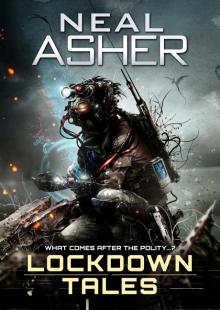 Lockdown Tales
Lockdown Tales The Warship
The Warship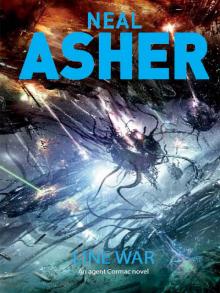 Line War
Line War Total Conflict
Total Conflict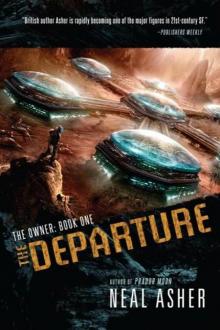 The Departure
The Departure Owner 03 - Jupiter War
Owner 03 - Jupiter War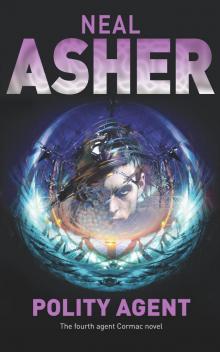 Polity Agent
Polity Agent Prador Moon
Prador Moon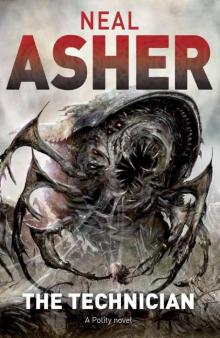 The Technician
The Technician Hilldiggers
Hilldiggers Gridlinked
Gridlinked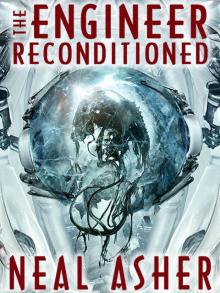 The Engineer ReConditioned
The Engineer ReConditioned Dark Intelligence
Dark Intelligence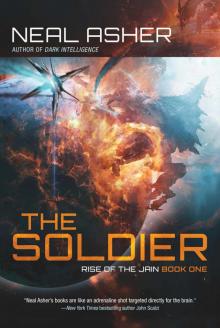 The Soldier: Rise of the Jain, Book One
The Soldier: Rise of the Jain, Book One Shadow of the Scorpion p-2
Shadow of the Scorpion p-2 The Skinner
The Skinner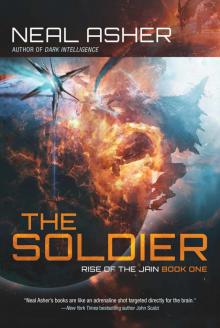 The Soldier
The Soldier The Gabble p-13
The Gabble p-13 The Gabble and Other Stories
The Gabble and Other Stories The Parasite
The Parasite The Other Gun
The Other Gun The Line of Polity
The Line of Polity Zero Point (Owner Trilogy 2)
Zero Point (Owner Trilogy 2)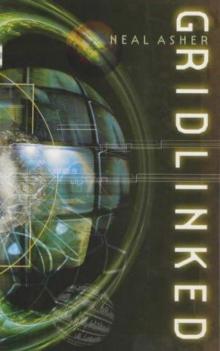 Gridlinked ac-1
Gridlinked ac-1 Prador Moon p-1
Prador Moon p-1 Infinity Engine
Infinity Engine Mindgames: Fool's Mate
Mindgames: Fool's Mate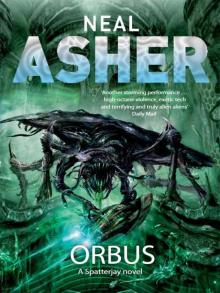 Orbus
Orbus Africa Zero
Africa Zero Line War ac-5
Line War ac-5 Brass Man
Brass Man The Departure to-1
The Departure to-1 Cowl
Cowl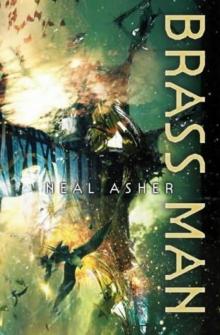 Brass Man ac-3
Brass Man ac-3 Hilldiggers (polity)
Hilldiggers (polity)![Greg Bear - [Eon Trilogy 1] - Eon (rescan) (v1.0) Read online](http://i1.bookreadfree.com/i2/04/08/greg_bear_-_eon_trilogy_1_-_eon_rescan_v1_0_preview.jpg) Greg Bear - [Eon Trilogy 1] - Eon (rescan) (v1.0)
Greg Bear - [Eon Trilogy 1] - Eon (rescan) (v1.0) The Skinner s-1
The Skinner s-1 The Voyage of the Sable Keech s-2
The Voyage of the Sable Keech s-2 The Line of Polity ac-2
The Line of Polity ac-2 War Factory: Transformations Book Two
War Factory: Transformations Book Two Polity Agent ac-4
Polity Agent ac-4